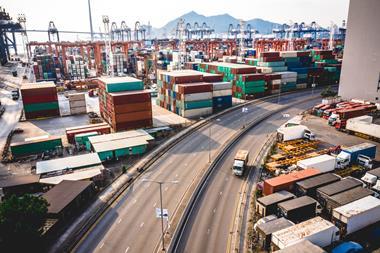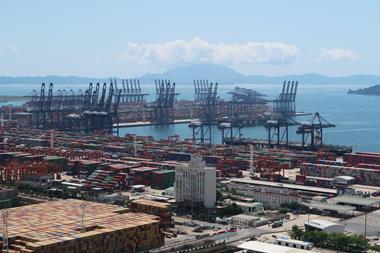Companies are redesigning supply chains, but BI insurance protection remains a “wafer-thin patchwork”
Covid-19 caused a domino-effect to cascade through global production and logistics networks. It led to shortages of raw materials and components, shipping delays, port blockages, even an undersupply of truck drivers.
Supply chains could not adjust to huge fluctuations in consumer demand. This systemic challenge left contingency plans inoperable, and has prompted businesses to rebuild their supply chains from the ground up.
“Businesses have learned from the supply-chain crisis and are actively working to increase their resilience to future shocks, but much more remains to be done,” said Hugo Wegbrans, Global head of Broking at WTW.
“They are more aware of their vulnerabilities, and are taking action to deal with them, but they are often hampered by an inability to get hold of detailed data, or to achieve full visibility through all the links in the chain.”
Demand for risk transfer solutions
The experience has created a demand-bulge for relevant business interruption coverage, according to a report by WTW. The large majority of firms recognise that insurance has a role to play, Wegbrans said, which represents a growth opportunity.
“At the moment, insurance to cover purely financial supply-chain losses provides only a wafer-thin patchwork of protection,” he continued. ”Major coverage gaps were exposed by the pandemic, and companies remain un- or under-insured.
“Only a quarter feel confident they have sufficient coverage for the impact of extreme weather on their supply chain, for example, and fewer than one in five has specific policies to cover supply-chain BI.
”Businesses in all sectors need to transfer their significant exposures to achieve true resilience.”
Supply chains still recovering
The risk intermediary’s recent survey polled supply-chain risk decisionmakers at large companies around the world active in eight key sectors.
Most suffered larger-than-expected losses during the supply-chain crisis, many are still recovering, and most are seeking to boost resilience by reducing supply-chain complexity, the survey found.
- 65% of respondents said supply-chain-related losses were higher or much higher than expected over the past two years, although 58% said the sales impact was short-term.
- 83% have made supply-chain changes, including 18% that completely transformed their approach. 58% plan to make significant changes over the next two years.
- 73% said supplier unwillingness to share commercial information makes full supply-chain transparency difficult to achieve.
- 89% believe insurance of supply-chain risks is “mission critical” or “necessary,” but 80% said their lack of coverage poses a serious challenge.
- Only 17% of respondents have specific insurance to cover supply-chain business interruption risks, but 53% believe it is covered by other insurances.
The survey was conducted in November and December 2022 among 800 C-Suite officers and heads of risk, supply chain management, and logistics at companies with revenues greater than $250 million in the sectors life sciences, semiconductors, food beverage & agriculture, logistics, complex manufacturing, construction, energy, and renewables.




















No comments yet